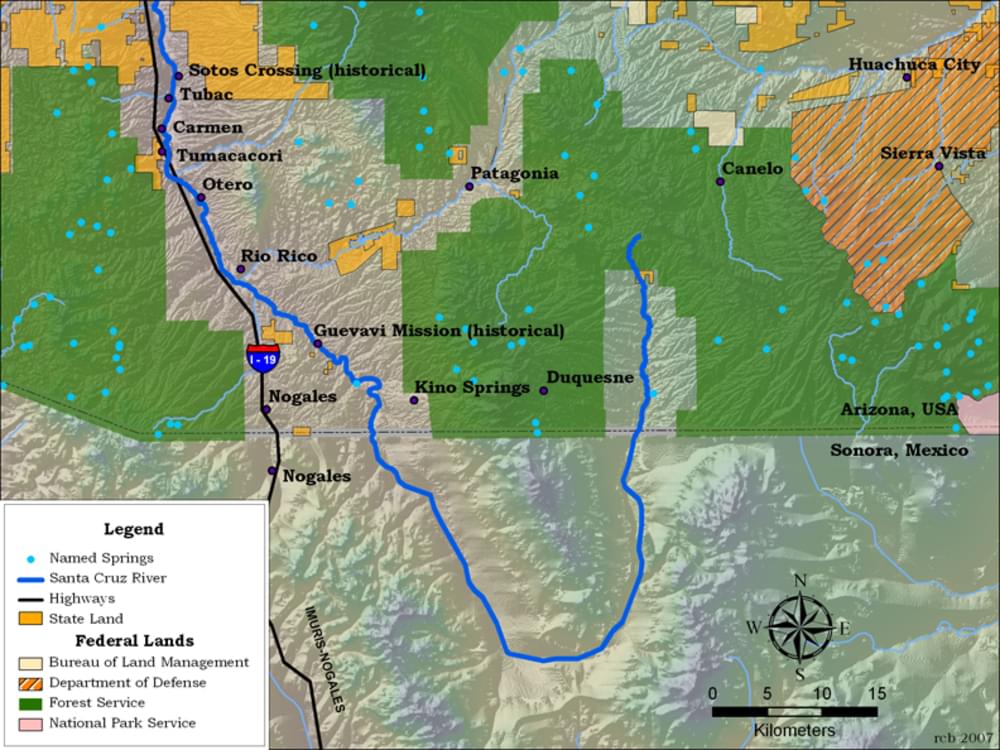Santa Cruz River--Cortaro Mesquite Bosque
Santa Cruz River--Cortaro Mesquite Bosque
Tucson, Arizona 85743
Official WebsiteSanta Cruz River Official Website
Santa Cruz River map
About this Location
Cortaro Bosque is an 80-acre habitat restoration project completed by the RFCD in March 2008. The project is designed to increase the biological diversity and plant community structure of the Santa Cruz River floodplain, providing wildlife habitat, particularly forage and nesting areas for birds.
The planting scheme consists of “islands” of vegetation zones or plant communities separated by areas of native grasses. This planting scheme provides extensive “edge” habitat favored by animals. The edge habitat created at the boundaries of the grassland and the islands of denser taller vegetation provides a diverse area for animals to forage and take cover. The islands are comprised of five types of plant communities: cottonwood-willow, riparian mesquite, riparian grassland-willow, xeroriparian (drier) mesquite bosque, and upland grassland and shrub-scrub habitat. All plant material was grown for the project by the Pima County Native Plant Nursery using seeds collected locally.
The Cortaro Bosque is located on the Santa Cruz River floodplain terrace adjacent to the Continental Ranch residential development upstream of Twin Peaks Road. A paved river park trail and area earthen paths provide opportunities for walking, wildlife viewing, and bird watching.
About Santa Cruz River
See all hotspots at Santa Cruz River
The Santa Cruz River is about 184 miles long. It begins in the high grasslands of the San Rafael Valley east of Patagonia. At first, it runs south into Sonora Mexico for several miles before it changes its mind and heads north back into Arizona where it passes the early Spanish missions of Tumacacori and San Xavier del Bac, and the old Spanish Presidio de Tucson about 70 miles north of the International Border.
Content from Official Website, Santa Cruz River Official Website, and Southeastern Arizona Bird Observatory webpage
